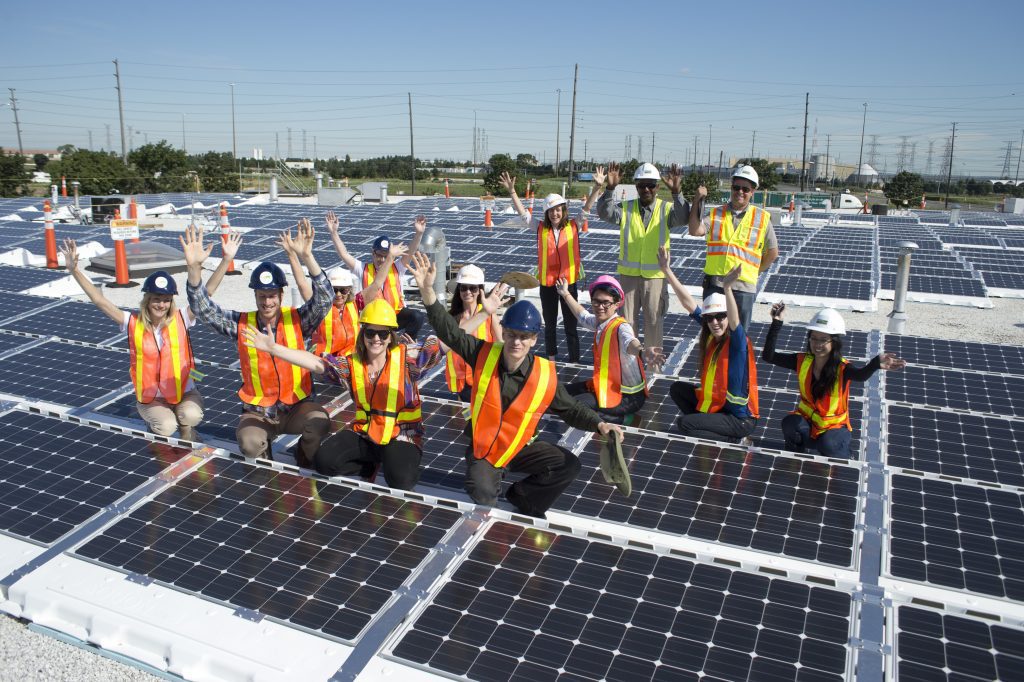On Thursday October 26, 2017, Ontario released its Long-Term Energy Plan (LTEP), which is supposed to set out the province’s vision for how we’ll meet our energy needs for the next 20 years. The plan should be a companion piece to Ontario’s Climate Change Action Plan (CCAP) and lay out the pathway to a low-carbon economy.
So, does it? The answer is, maybe.
The plan makes reference to the Climate Change Action Plan multiple times, and contains sections on building a clean electricity system, getting more from energy conservation, and Ontario’s renewable energy success. It has an entire chapter on responding to the challenge of climate change. But it doesn’t offer up many concrete ways that Ontario will actually respond to the urgent need to decarbonize our energy system and our economy.

In short, the LTEP talks about supporting solar net-metering, energy storage, electric cars and energy conservation. But it also commits to refurbishing expensive nuclear plants, expanding the natural gas network, and the potential that gas-fired power plants will play a greater role in the future than they do today, which would cause polluting emissions from electricity to rise. The LTEP does lay out a low-carbon energy scenario, but it doesn’t commit us to that path.
On the positive side, the LTEP includes a commitment to net metering to replace the feed-in-tariff program. Under net metering, a household or business with a solar installation would buy power from the grid when their system isn’t producing enough, and sell power to the grid when they are producing a surplus. The customer would pay for the difference between the amount they produced versus the amount they consumed.
The province has added a couple elements to expand the reach of net-metering: third party ownership, and what’s called “virtual net metering,” both of which are welcome additions. Third party ownership would allow someone other than the building owner to install, own and operate a roof-top solar system. And the virtual net metering would allow people to participate in renewable energy projects that are not physically located on their home or workplace. Both of these should mean more solar power in Ontario.

The LTEP also envisions an expanded role for energy storage – and recognizes the merits of pairing storage with renewable energy generation like solar power. This, too, is welcome. Energy storage is a rapidly evolving technology, and it has the potential to be a game changer.
The plan forecasts a relatively rapid adoption of electric vehicles in Ontario. There are over 8 million cars and trucks on Ontario’s roads today. The LTEP is planning for 2.4 million of those vehicles to be electrically-powered by 2030. Also referenced is the commitment to net-zero buildings, which will reduce the province’s energy consumption.
There’s a chapter dedicated to Ontario’s ongoing commitment to energy conservation. The LTEP also makes reference to the conservation efforts in Ontario’s Climate Change Action Plan, including incentive programs to help people do energy efficiency retrofits. Unfortunately, however, there’s no new commitment to conservation and no increase of the conservation target.
On the negative side, the LTEP reiterates Ontario’s plans to expand the natural gas network. Gas is less carbon intensive than coal, but it’s still a fossil fuel and it contributes to climate change. In fact, recent evidence suggests that natural gas’ contributions to climate change are much greater than previously thought because methane – which is basically what natural gas is – is 80 times more powerful a greenhouse gas than carbon dioxide over a 20 year period, and large amounts of methane are released to the atmosphere when the gas is extracted.

Another issue with the LTEP: there’s no firm commitment to new renewable energy. The only certainty we have about future electricity generation in Ontario is that the province is proceeding with refurbishing the 10 nuclear units: 4 at Darlington and 6 at Bruce. The rest of the supply will be determined via a process they are calling “Market Renewal,” which is basically a process to contract supply as needed, rather than lock the province into more long-term contracts.
To be fair, the description of market renewal makes reference to an alignment with the Climate Change Action Plan. The market renewal framework, we’re told, will properly value environmental attributes, which is good. Except exactly how those attributes will be valued isn’t disclosed. The LTEP does confirm, however, that natural gas facilities will be eligible to bid into the capacity auction the province has planned.
The LTEP commits Ontario to staying on a relatively low carbon path, but how low remains a question. The plan lays out two possible GHG emissions outlooks, one of which is a low emissions outlook. It puts out the possibility that electricity sector carbon emissions will continue to decline, but it doesn’t offer any certainty.
So, is LTEP a pathway to a low-carbon future? Maybe.









